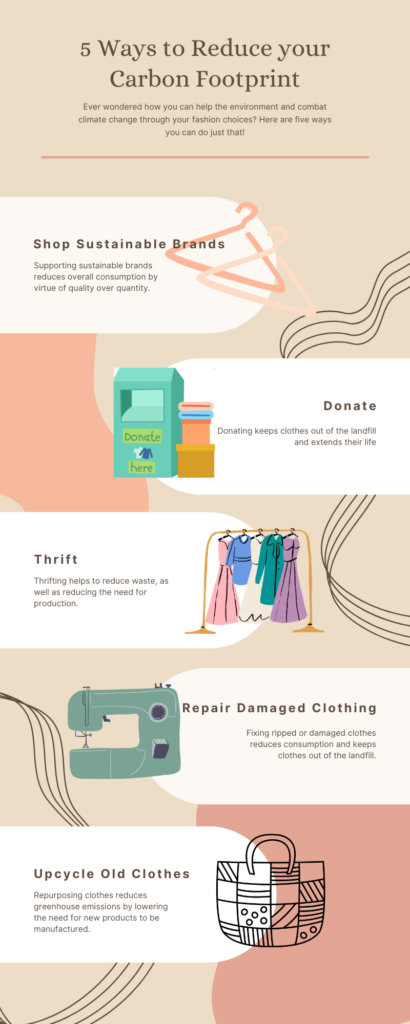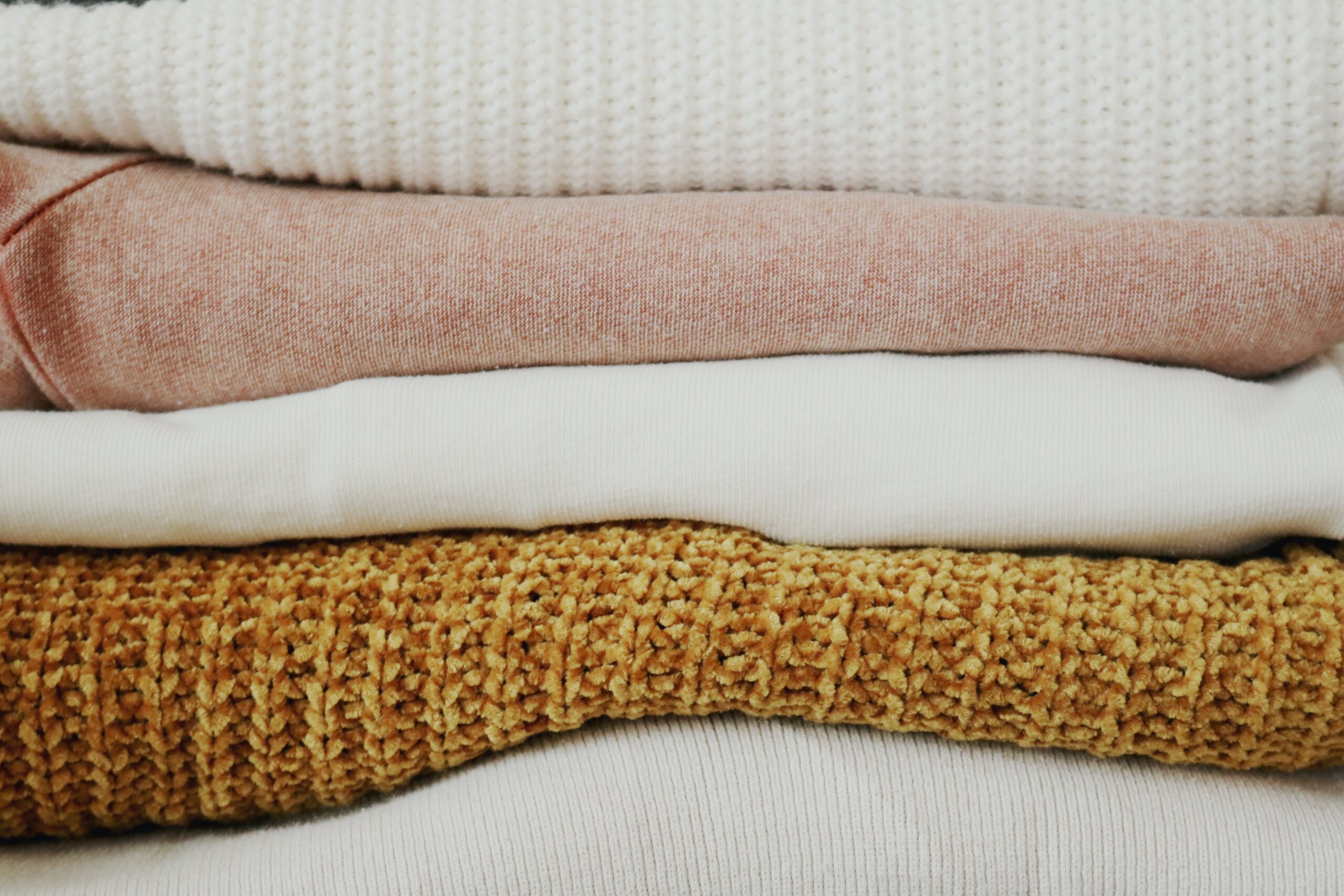Reducing Your Carbon Footprint in the Fashion Industry
Making responsible and sustainable choices when it comes to fashion is crucial. In the wake of the climate crisis, making eco-friendly and sustainable fashion choices is more important than ever. The fashion industry has a significant impact on the environment. Pollution, water consumption, greenhouse gas emissions, and deforestation are just some of the ways the fashion industry impacts the environment. Here are 5 things you can do to help reduce your contribution to the fashion industry’s carbon footprint.

Shop Sustainable Brands
Sustainable brands are good for the environment and even for people. Supporting brands that are eco-friendly is one of those ways we can help reduce the fashion industry carbon footprint. It is a simple, yet powerful way to show you care about the future and the environment.
Brands like Patagonia are leading the way in sustainability, and they use eco-friendly materials to create clothes that have little to no impact on the planet. By supporting sustainable fashion brands, you are helping to reduce waste and pollution.
Donate
Textile waste is a large issue in the world of fast fashion; you can help by donating clothes you no longer need. You can donate to consignment and vintage stores, and places like Value Village and Salvation Army if you’re wanting to donate large quantities of clothes to get them out of the house.
Donating your old clothes is a huge win for sustainability and one of those ways we can help reduce the fashion industry carbon footprint. When you donate your old clothes you are giving it a second life, which means less waste to our environment.
Thrift
Thrifting plays an essential part in reducing our personal carbon footprints and bettering the world of fashion in general. By shopping through thrift and vintage stores you are not only benefiting the environment and small businesses, you are creating an individual style for yourself by purchasing unique and important pieces to you. By extending the life of pre-loved items, you are helping to cut down the waste of textiles and creating denormalization of fast fashion purchases. Thrifting is and will continue to be beneficial for individual people and our earth.
Repairing Damaged Clothing
Repairing clothes can revamp your dull wardrobe and save your wallet. It’s as easy as hemming old jeans and turning them into new shorts for summer, or sewing up a small hole in your favourite sweater. With a good pair of scissors and a small sewing kit, you can fix up just about anything in your closet. Learning how to fix up old pieces will cut down the costs on new items and give your old clothes a new feel. Fix it up, don’t throw it out.
Upcycle Old Clothes
Upcycling clothes has become a popular way to reduce our carbon footprint through fashion. By repurposing old or unwanted clothing, we can minimize waste. This approach to fashion is not only sustainable, but it also allows everyone to express their creativity and style. Upcycling can be as simple as adding patches, embroidery, or paint to an old jacket or as complex as deconstructing several garments to create a new and unique piece.
Apart from reducing waste, upcycling also helps to reduce the demand for new clothing production, which is a significant contributor to environmental pollution. By choosing to upcycle our clothes instead of buying new ones, we can positively impact the environment while creating something beautiful and unique. Upcycling clothes is a fun and creative way to contribute to a more sustainable industry and make something your own.
Do Your Part
By incorporating any of the above 5 things into your life, you are helping to reduce the carbon footprint of the fashion industry and making the planet a greener place.






